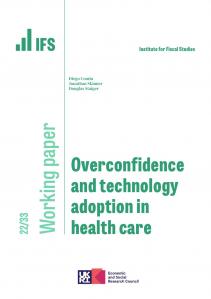In order to achieve the optimal level of R&D investment, government policy should aim to bring private incentives in line with the social rate of return. The first part of this note considers current estimates of the private and social rates of return to R&D. These estimates suggest that the gap between private and social rates of return is quite large. A comparison of the levels of R&D intensity in the business sector is then made across countries. The UK has the lowest R&D intensity of the G5 countries and, perhaps more worryingly, the trend has been flat while in other countries R&D intensity has been increasing over time. This is reflected in lower productivity levels in the UK (although there is much debate over the measurement of productivity and the size of this gap).
What then can and should the government be doing to increase the amount of R&D done in the UK? There are a large range of policy instruments that could affect the share of GDP that is invested in R&D. Indirect policies such as competition policy and regulation may be important. Direct policies include direct funding of R&D, investment in human capital formation, extending patents protection and tax credits for R&D. R&D tax credits have become a popular policy tool, with many countries offering subsidies of this form. Recent empirical evidence suggests that R&D tax credits are an effective instrument, although there are many remaining questions about their desirability. Do they increase the total amount of R&D or is their main impact to reallocate R&D between countries, i.e. is the increasing use of R&D tax credits one form of tax competition between countries for a mobile activity? In a world with multinational firms, one issue that arises is whether it is R&D in the UK or R&D by UK firms that we are concerned with. Does an increase in R&D expenditure lead to increases in the knowledge stock, or does it simply lead to higher wages for R&D scientists, as has been suggested by recent work in the US? Is it possible to provide subsidies to the extent needed to raise R&D intensity in the UK to the level in other G5 countries, without creating other distortions to economic activity?
It is difficult to design and implement an effective subsidy to R&D without taking a view on the answer to at least some of these questions.










